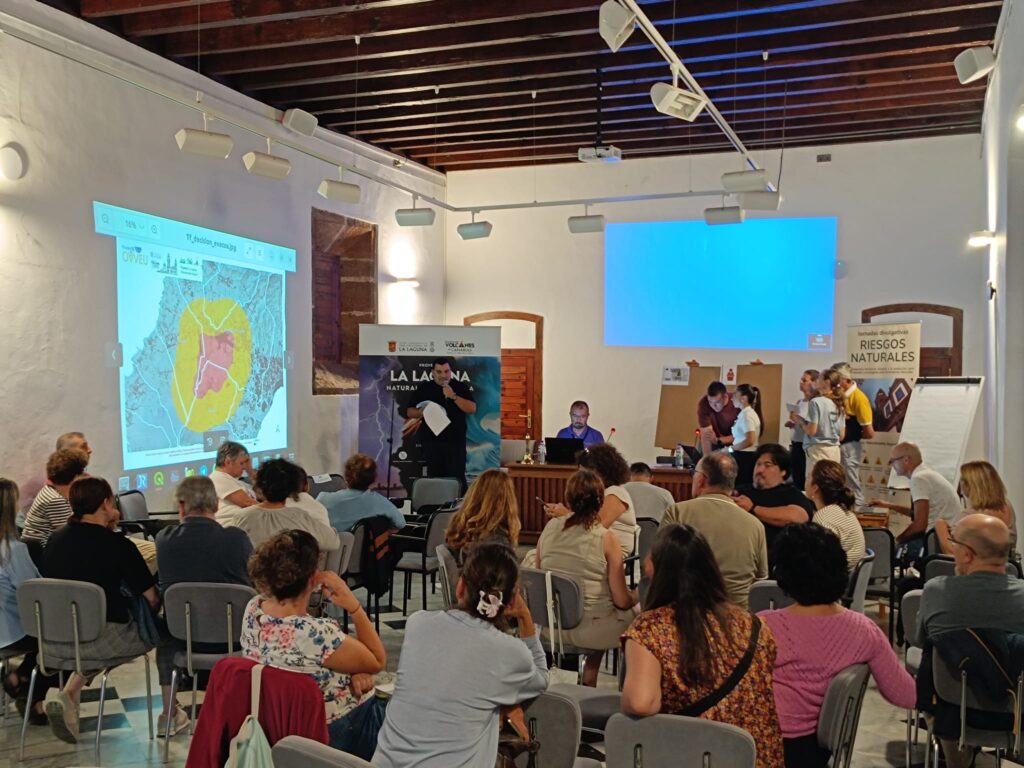The European project Life Garachico continues to develop studies and tools that will make it possible to anticipate the risk of extreme waves in this area in the northwest of Tenerife and reduce possible damage to property and people artificial intelligence (AI). This week the fourth meeting of the Monitoring Committee of Project Life Garachicoin person and on-linein which the latest technical and financial advances of the project were presented.
Among the most outstanding actions are the installation of cameras on the coastline to start the training process of Artificial intelligencelaboratory tests in a wave channel, the anchoring of a current meteran instrument used to measure the speed and direction of a stream of water, and bathymetric survey of the area, which will make it possible to have a topographic study of the relief of the surface of the land covered by water on the coast of garachico.
These cameras will allow analysing, together with artificial intelligence, “the feasibility of using real-time images to monitor the sheet of water that reaches the coastline of the municipality and the detection of risk of extreme coastal events”. This is one of the actions that are being carried out with the aim of creating the Coastal Flood Early Warning System from Garachico.
current measurement
With respect to current meter, anchored at a depth of about 40 meters earlier this year, “will allow team members to obtain data such as the height of the waves, their direction of origin and the period of time that elapses between waves.” The objective is to record the information of some of the biggest storms that occur during the analysis period.
In this last meetingheld on the 18th, the consortium of participating entities carried out a general review of the financial progress of the project and presented the preparatory actions that have been carried out to conclude the first stage of this initiative that “seeks to define a flexible adaptation strategic framework for the coastal municipalities of macaronesiain order to increase its resilience against extreme coastal events, current and future, due to climate change.
This project has a total of 11 partners: the Ministry of Ecological Transition, Fight against Climate Change and Territorial Planning of the Government of the Canary Islands; he Island Council of Tenerife; the Garachico Town Hall; the City Council of Puerto de la Cruz; the Institute of Environmental Hydraulics of the University of Cantabria (IH Cantabria); cartographic of Canary Islands SA (Grafcan); the National Civil Engineering Laboratory of Portugal; the Tragsa Group; the University of La Laguna; the EVM Group, a consultancy specialized in the digital transformation of companies and organizations, and Elittoralan environmental consultancy specialized in the coastal and marine environment.
This initiative, which began development in October 2021also works in dissemination activities and active participation of citizens with the realization of surveys, workshopsneighborhood meetings and different meetings with associations, groups of the elderly and merchants to involve the local population in its development.
Specific objectives
Among the specific objectives of this initiative, budgeted at more than 2.6 million euros, there is the standardization of a coastal flood risk analysis procedure; provide tools to determine acceptable risk levels for urban communities; implement in garachico and replicate in Praia da Vitoria and Cross port adaptation measures that, together with early warning systems, reduce the risk; develop technical recommendations and management tools to reduce the risk of flooding and for implementation in areas of Macaronesia; develop new management policies and market products to manage risk and generate employmentand adapt all this knowledge to other vulnerable coastal urban areas of the European Union.
The project will not only focus on scientific-technical solutions for the development of the adaptation strategy, but rather aims to go further, “involving the different social and economic actors affected by the floods of Garachico”.
Puerto de la Cruz and Azores
The Life Garachico project has as its main objective “the development of an innovative Strategic Framework for Flexible Adaptation based on the combination of a flood risk characterization and the evaluation of acceptable levels of this risk by the local population”. The northern town of Garachico, in the northwest of the island, acts in this project with European funding as a “pilot location where to deploy different strategies, which will also be partially replicated in the Tenerife municipality of Puerto de la Cruz and in Praia da Vitòria, in the Portuguese Azores archipelago. The challenge is to “increase the resilience of urban communities in Macaronesia against extreme coastal events due to the effects of climate change.”















